Halloween is upon us, and you know exactly what that means: trick-or-treat bags overflowing with Halloween candy. It's the time of year when parents have their children brush their teeth a little longer and pray that no candy-induced cavities appear.
All candy is going to have some level of sugar of course, but there are plenty of types that use artificial ingredients and additives. And when your kids have trick-or-treat bags full of these, you may start to worry. But which candies are worse than others? And how do you know what to look for?
"The worst candies would be high in sugar and/or saturated fats and trans fats, while also contributing no nutritional value," says Lisa Young, PhD, RDN, author of Finally Full, Finally Slim and member of our medical expert advisory board.
And Amy Goodson, MS, RD, CSSD, LD author of The Sports Nutrition Playbook and member of our Expert Medical Board, adds that "while some candies may not [list] 'sugar' [in the ingredients list], sugar has lots of names including inverted sugar, dextrose, and high fructose corn syrup."
This isn't to say that you can't enjoy any of your favorite Halloween candies this year, but dietitians consider the ones listed below to have some of the lowest-quality ingredients.
Skittles
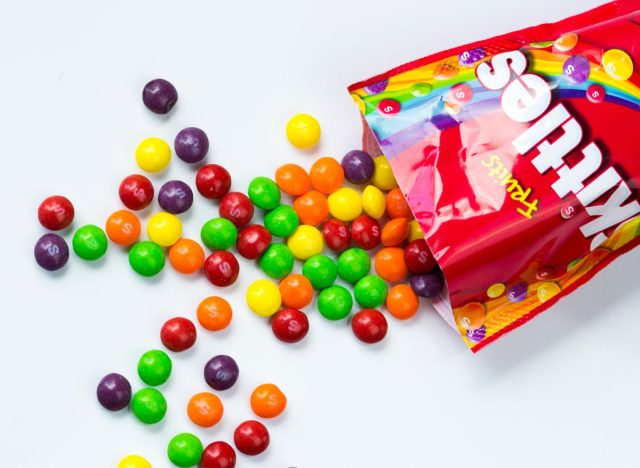
Skittles, like most candies, are loaded with added sugar in the form of both sugar and corn syrup. According to Goodson, you may want to limit your consumption of these. "Consistent intake of added sugars in the diet can increase your risk of diabetes, weight gain, and even heart disease," she says.
She also adds, "the Dietary Guidelines for Americans recommend that children 2 to 18 years old and women consume less than 25 grams of added sugar a day, or 6 teaspoons. Adult men should consume less than 150 calories from added sugar and 9 teaspoons. In most cases, a serving of colorful Halloween candy provides 6 teaspoons of sugar or more," says Goodson. In fact, in just one 2.17-ounce package of Skittles, you'll get 47 grams of sugar!
Starburst
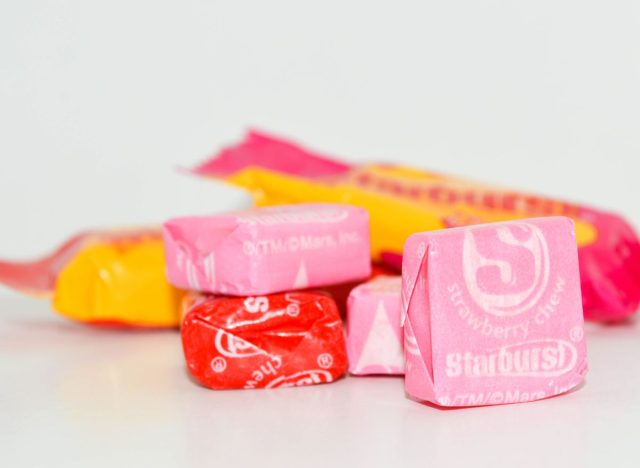
Starbursts use artificial coloring, as do most fruity, chewy candies. Although the research is very mixed about these dyes, Goodson says "some studies have shown artificial food colors linked to increased hyperactivity (ADHD) and behavioral issues in children."
Hot Tamales
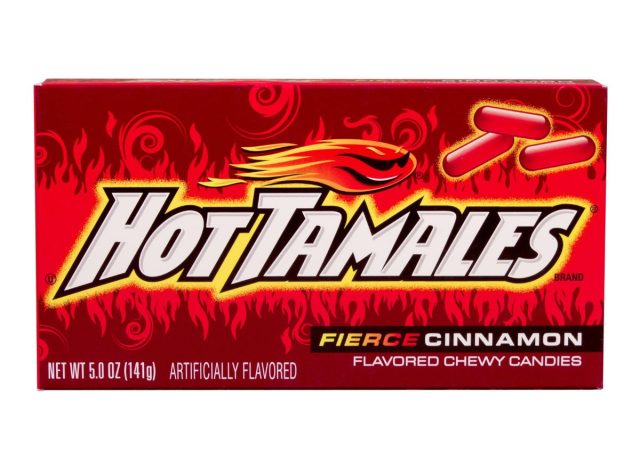
Hot Tamales may appeal to cinnamon and spice lovers, but these candies are better off in the box.
"Like most candy, the key ingredients in these Hot Tamales are sugar and corn syrup," says Young. "Plus it contains Red 40 for the dye which the Center for Science in the Public Interest, a consumer advocacy group, says may contain carcinogens."
Swedish Fish
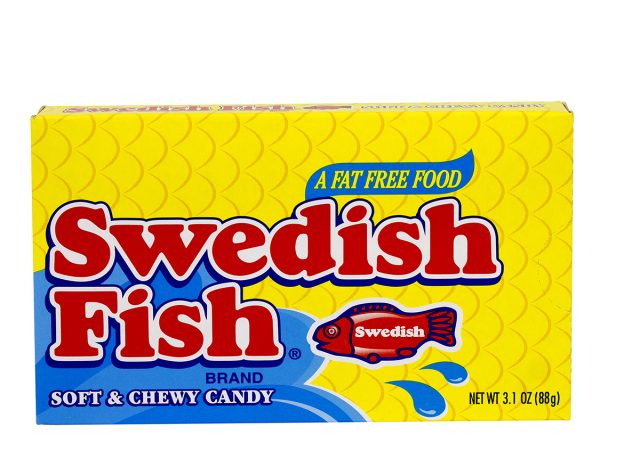
Swedish Fish are some of the most popular and nostalgic gummy-type candies, but you may want to choose another fish in the sea.
"Swedish Fish are pure sugar and a dentist's absolute nightmare since they stick to your teeth. Swedish Fish also contain carnauba wax, which is considered safe but is also used to polish cars," says Young.
Milky Way
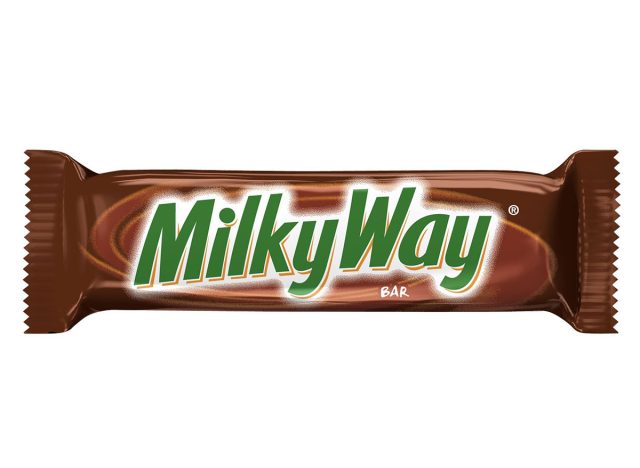
Everyone loves getting a Milky Way bar in their trick-or-treat bag, but this candy is full of added sugar and saturated fats. Instead, you may want to try a healthier chocolate.
"I'd skip this chocolate because it's made with corn syrup, sugar, milk fat, and hydrogenated palm kernel oil," says Young. "And, the caramel can also stick to your teeth."
Candy Corn
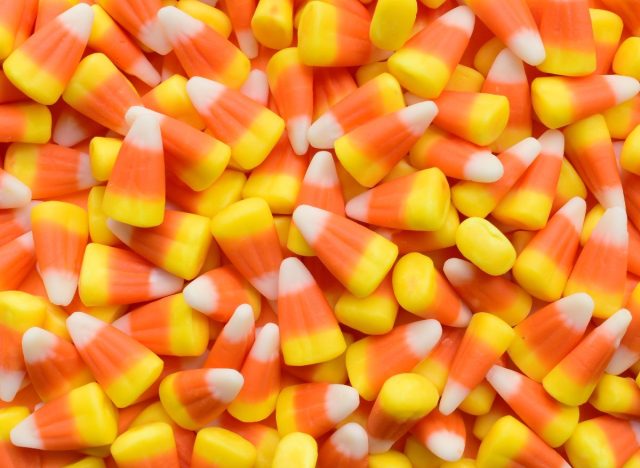
"This is the go-to for most Halloween candy enthusiasts, but they are essentially made of just sugar and honey," says Trista Best, MPH, RD, LD, a registered dietitian at Balance One Supplements. "Honey may be a natural sweetener, but here it just adds to the sugar and carbs contained in this popular treat. Many varieties also opt for other syrup-like ingredients rather than honey to give them their chewy texture and sweet flavor."
Tootsie Roll Pops
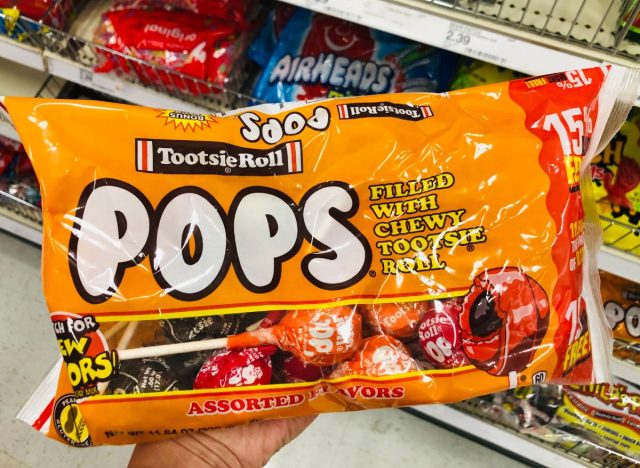
"Not only can these be dangerous depending on the age of the child they are being given to, but they are also one of the lower quality Halloween candies," says Best. "They contain sugar, corn syrup, and partially hydrogenated oils to give them their flavor and textures. These ingredients are highly inflammatory and can lead to a rapid sugar rise and crash."
No comments:
Post a Comment